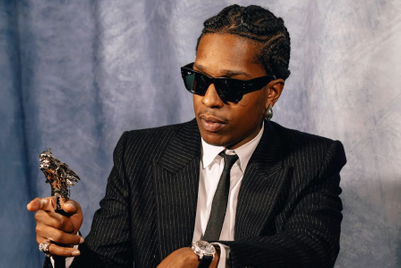
Alexandre Arnault, CEO of the luggage brand Rimowa and the son of LVMH founder Bernard Arnault, stated in a series of recent interviews that he prefers not to use the term “luxury” as it’s too connected to price. I believe this is true, and the word is often used far too loosely. Today, companies slap a high price tag on almost any type of product as a way to label it “luxury.” Yet this strategy almost always fails.
At a recent conference on luxury beauty, one speaker showcased a luxury brand she launched about two years ago. When I asked what made the brand “luxury,” she replied that the packaging looks luxurious, the ingredients are amazing, and the formula performed extremely well. And, she added, the price is high. In short: Packaging, function, and price were the attributes that made a brand luxurious to her.
This is what I call the luxury trap. It’s a fatal mistake many brands make. Defining a luxury brand by its functional aspects and high prices cannot replace the value a brand creates.
Thus, when people ask me about the best way to create a luxury brand, I talk to them about extreme value creation. Luxury brands have to create an extreme amount of value for their consumers. Design, packaging, and function are undoubtedly important features. However, they aren’t what drive Added Luxury Value (ALV), and ALV is the precondition that’s needed before someone will even consider buying a luxury brand.
Brands must define extreme value creation first. Only then can they determine their prices. When pricing comes first, and the value proposition is unclear, brands will fail in the long run.
Even in sophisticated product categories such as high-end mechanical watches or hypercars, high-tech products aren’t extreme value drivers. A great brand story, followed by a consistently excellent execution of that story across all customer touchpoints, drives value. I often see brands try to mask a weak brand story by throwing money at celebrities or influencers in their advertising. But amplifying a weak story with multiple communication outlets doesn’t make it stronger, it only makes things worse. Budgets are wasted, poor consumer connections are created, and the brand fails anyway.
Instead, brands need to develop a much more critical view of themselves. They should start by asking questions—Who are we? Why are we doing what we’re doing? What do we do differently than any other brand? Why/how are we creating value for consumers? What is our value creation model? It is surprising how few brands can answer these questions.
Once those gaps are identified, brands can truthfully develop their brand story. It must be insight-driven, relevant, authentic, and differentiating. And these can’t be faked. “Authentic” means being completely real (95-percent authentic isn’t enough.) Consumers, especially Gen Zers, identify weaknesses immediately and will walk away from inauthentic brands. In a time of so much digital noise, brand storytelling is much more important than ever before.
The next step is to validate the story across the entire customer journey. This includes product attributes (including quality and craftsmanship), but those aren’t enough. All online and offline touchpoints need to be mapped and optimized. If luxury doesn’t create memories, it isn’t creating value. In other words: If a brand doesn’t manage the brand story and the customer journey, it can’t create consumer value, never mind extreme value. Only when these steps are taken can a brand start thinking about pricing. The price needs to be the result of the ALV a brand generates, measured through luxury pricing tools.
Now you can understand why a “beautiful package and high price” isn’t luxury per se. To succeed, managers must change their perspectives and think more about value than price. That means taking a different, more holistic approach by putting consumer value creation at the center of all their activities. A decade ago, brands could get away with not being precise in execution as the world was less digital and the competition wasn’t as sophisticated. But in today’s world, brands need to understand why luxury is more than just expensive.
Daniel Langer is CEO of the luxury, lifestyle and consumer brand strategy firm Équité, and the professor of luxury strategy and extreme value creation at Pepperdine University in Malibu, California. He consults some of the leading luxury brands in the world, is the author of several luxury management books, a global keynote speaker, and holds luxury masterclasses in Europe, the USA, and Asia. Follow @drlanger



.jpg&h=334&w=500&q=100&v=20250320&c=1)

.jpg&h=334&w=500&q=100&v=20250320&c=1)
+(1).jpg&h=334&w=500&q=100&v=20250320&c=1)

.jpg&h=334&w=500&q=100&v=20250320&c=1)



.jpg&h=334&w=500&q=100&v=20250320&c=1)



.png&h=268&w=401&q=100&v=20250320&c=1)
+(4).jpg&h=268&w=401&q=100&v=20250320&c=1)


